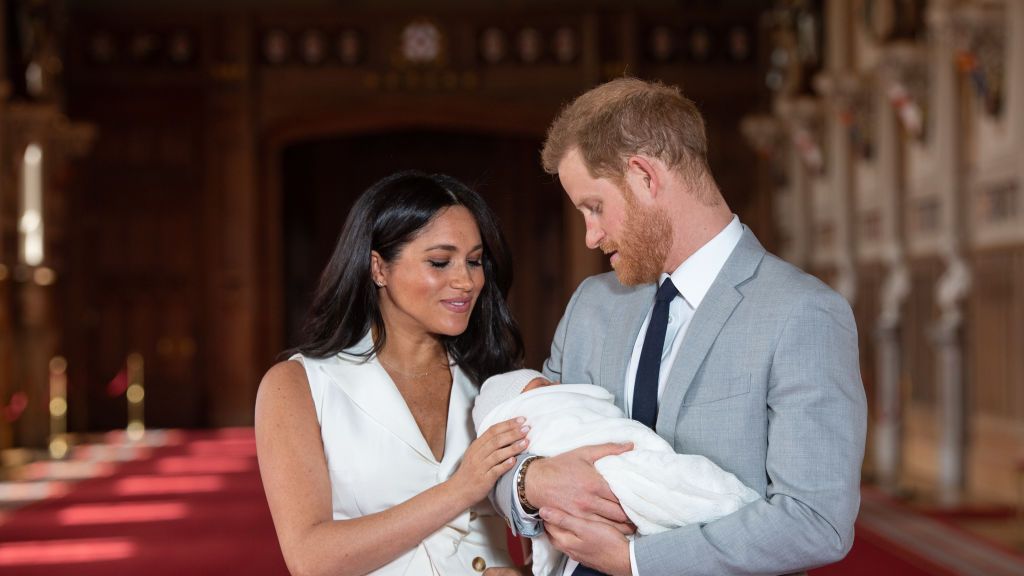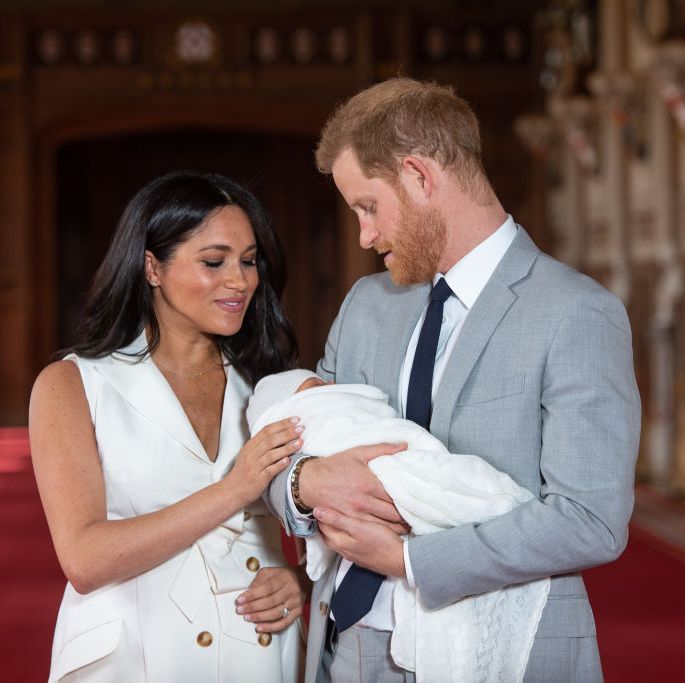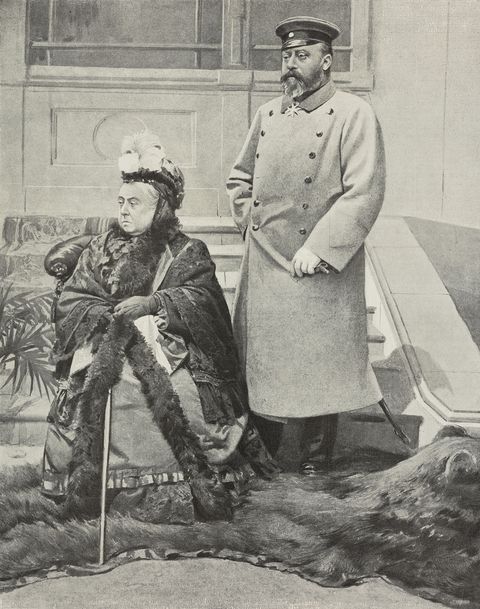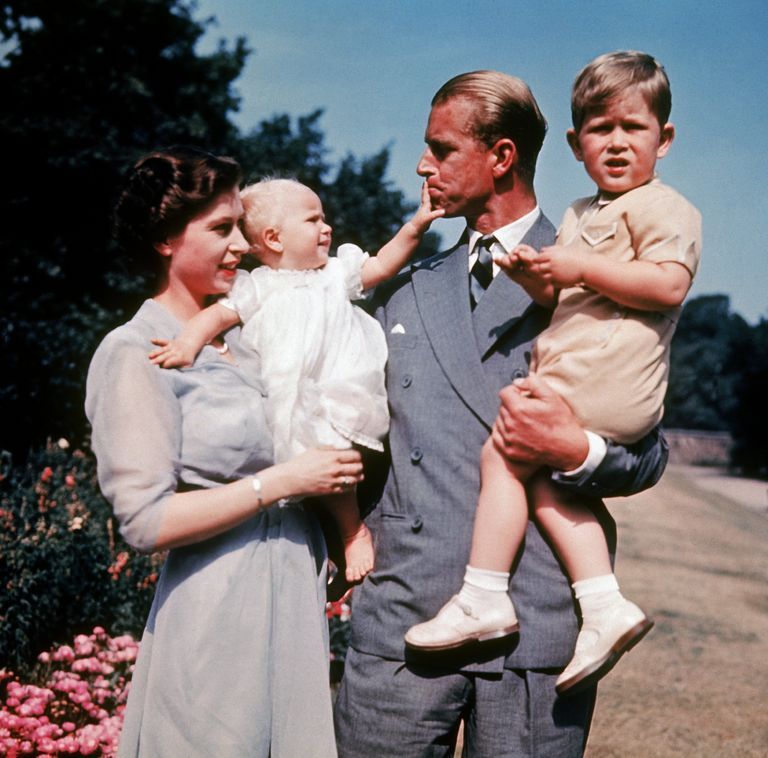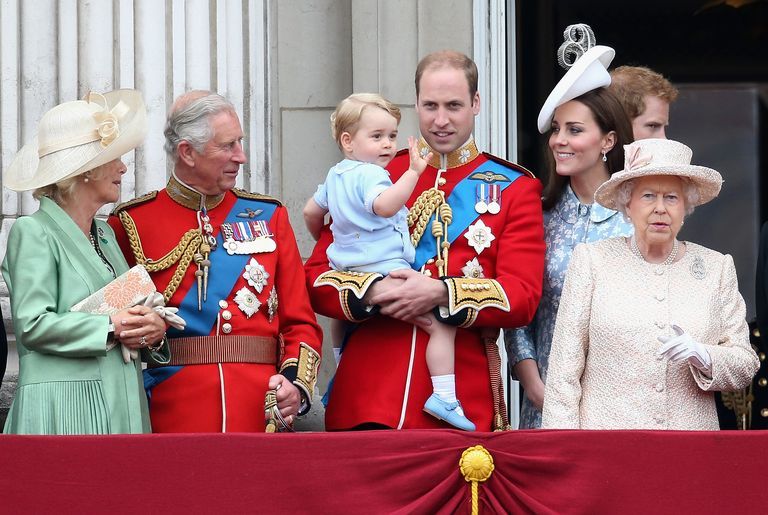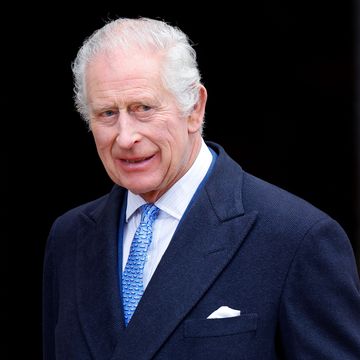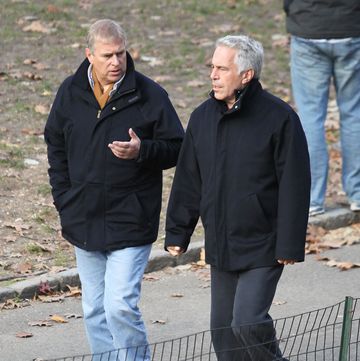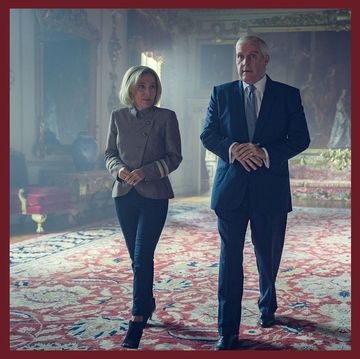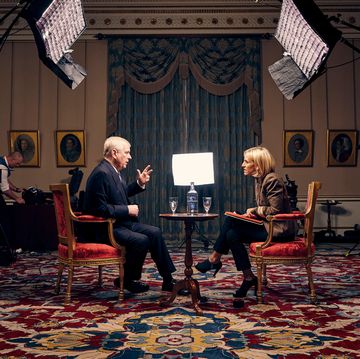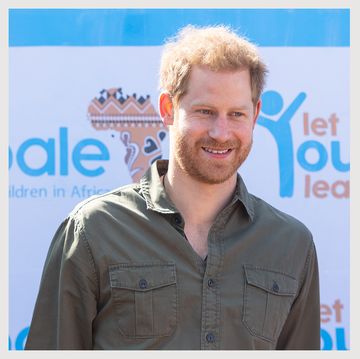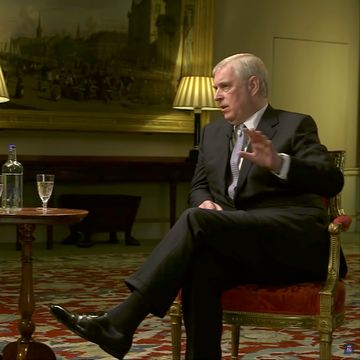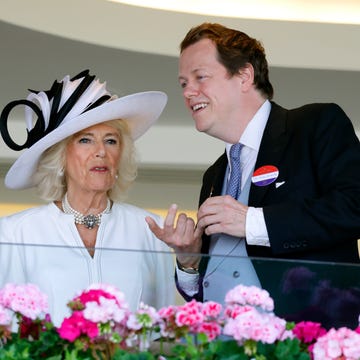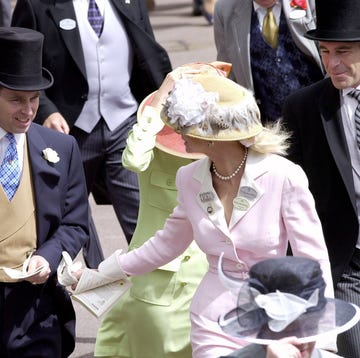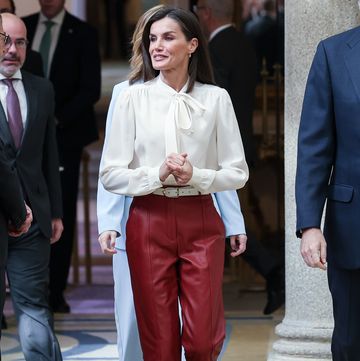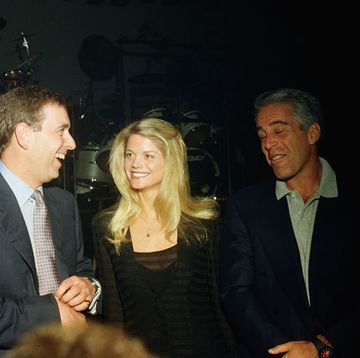Update: Following the death of Queen Elizabeth and King Charles III's accession to the throne, Archie and Lilibet Mountbatten Windsor immediately became Prince Archie and Princess Lilibet as grandchildren of the reigning monarch following the current Letters Patent. Following an update to the royal family's website, it appeared they would not use these titles, as they were still listed as Master Archie Moutbatten-Windsor and Miss Lilibet Mountbatten-Windsor. But in March 2023, a Sussex spokesperson confirmed Harry and Meghan's daughter's christening with a statement which read, "I can confirm that Princess Lilibet Diana was christened on Friday, March 3 by the Archbishop of Los Angeles, the Rev John Taylor," indicating that Meghan and Harry are now using "Prince" and "Princess" for their children. A few days later, the royal family changed their official website to reflect these titles.
Prince Harry and Meghan Markle’s son Archie Harrison Mountbatten-Windsor may be seventh in line to the British throne and a great-grandchild of the reigning monarch, but—as the public was reminded in Harry and Meghan’s primetime interview with Oprah Winfrey—in one crucial way, Archie is just like you or me: He isn’t a Prince and doesn’t have a title.
If things remain as they currently stand, that could change when his grandfather becomes the monarch. “Archie will be able to use the title of HRH Prince when Charles becomes King,” says royal historian Carolyn Harris, author of Raising Royalty: 1000 Years of Royal Parenting, told Town & Country shortly after Archie’s birth. She added, “but it is possible that he will not use this title. Archie will not be able to pass the title of Prince or Princess to his children as they will be another generation removed from the sovereign, but the title of Duke of Sussex will pass to Prince Harry's male line descendants.” (Male line refers to the system of patrilineage, in which a child inherits titles from their father, not their mother—unless their mother happens to be Queen.)
That would mean that when Charles becomes King, Archie will become His Royal Highness (HRH) Prince Archie, the same title that his cousins George, Charlotte, and Louis currently use. If the title “Prince” is what makes your ears perk up here, know that the “HRH” designation is almost as rarified and special. (Diana famously lost the right to use that designation after her divorce from Prince Charles and was allowed only to use the title “Princess of Wales.”)
Technically, when Archie was born, he could have used the title of Earl of Dumbarton because he is a great-grandson of the monarch in the male line, and because his father, Prince Harry, has a ducal title (the Duke of Sussex). At the time, it was thought that Harry and Meghan had chosen to forgo the title for their son—but in the Sussexes’ interview with Oprah Winfrey, Meghan said that wasn’t the case. She claimed that it was, in fact, the institution of the monarchy that didn’t want her and Harry’s child to have a title, which the couple learned while she was pregnant with Archie.
"They were saying they didn't want him to be a Prince or Princess, which would be different from protocol, and that he wasn't going to receive security," Meghan said. "This went on for the last few months of our pregnancy where I was going, hold on for a second."
She explained further, "They said [he's not going to get security], because he's not going to be a Prince. Okay, well, he needs to be safe so we're not saying don't make him a Prince or Princess, but if you're saying the title is what's going to affect that protection, we haven't created this monster machine around us in terms of clickbait and tabloid fodder you've allowed that to happen which means our son needs to be safe."
The Duchess said that no suitable explanation was given for why they didn't want Archie to want to have a title—but that if he needed to have a title to receive security, she did want him to have a one: “If it meant he was going to be safe, of course.”
Meghan also mentioned that the Firm (another name for the institution of the royal family) wanted to change the current conventions, which would make Archie automatically a Prince when Charles becomes King. "Even with that convention, they said, 'I want to change the convention for Archie.' Well, why?"
This was particularly concerning to Meghan given that her child would be "the first member of color in this family isn't being titled in the same way as other grandchildren would be"—and that "concerns and conversations about how dark [Archie's] skin might be when he was born."
But how did the royals arrive at this situation in the first place, in which conventions can be changed at will? Interestingly, who gets to be Prince or HRH is not dictated by some arcane rule that’s been in place since the Tudors and Stuarts ruled the realm, but an evolution of royal rules that’s taken place over the last century.
Royal historian Marlene Koenig broke it down for T&C this way, back in 2019: “This is the first time since 1894 with four living generations in direct line,” she says. The last time that happened was during Queen Victoria’s reign. At that point, the great grandsons of the Queen on the male line (yes, only the male line) were styled as “His Highness” (HH) only. A few years later, “Queen Victoria upgraded the children of the son of the Prince of Wales to royal highness, but all other male line great-grandchildren were His Highness,” says Koenig.
In 1917, Victoria’s grandson (and Queen Elizabeth II's grandfather) King George V issued a new “Letters Patent” (a.k.a. LPs, the kingly equivalent of an executive order) that did away with “HH” altogether. He limited the “HRH” designation to the children of the sovereign, grandchildren in the male line, and the eldest son of the eldest son of the Prince of Wales. That is why Archie currently does not have a royal title.
Under the 1917 LP, the other great-grandchildren of the monarch in the male line would be styled as younger sons and daughters of a Duke—hence why Archie could use the title of Earl of Dumbarton.
(An exception to this rule was made when then-Princess Elizabeth was pregnant with her first child, Charles, in 1948. Her father the King issued a Letters Patent to give her children royal (i.e. HRH) status before she succeeded to the throne. If King George IV had not done this, Charles would have been Earl of Merioneth and Anne, Lady Anne Mountbatten, taking their rank and titles from their father, the Duke of Edinburgh.)
The most recent change to the convention was made in 2012, when the Queen issued a new Letters Patent to address the question of what happened if Will and Kate’s first born child was a girl. The rules of succession had already changed—the first born child would be the heir, regardless of gender—but the 1917 Letters Patent still dictated that only the first born son could be HRH Prince. (Prior to this shift, had Charlotte and George’s birth order been switched, she would be Lady Charlotte, her younger brother would have been HRH Prince George, and then the third-born sibling would have been Lord Louis.)
Queen Elizabeth II issued a new Letters Patent that gave the HRH title to all the children of the eldest son of the Prince of Wales, smoothing out a confusing and obviously sexist situation. Consequently, the Duke and Duchess of Cambridge's two younger children are HRH Princess Charlotte and HRH Prince Louis.
The Queen could have, at that point, changed the rules to accommodate all the children of the sons of the Prince of Wales. “If Harry's kids were to be royal, the 2012 Letters Patent offered the perfect opportunity to make that known. It didn’t happen,” Koenig said. “Harry wasn’t married at the time, but he didn't need to be married for the LP to be changed.”
What Meghan appears to have been referring to in her interview with Oprah was a plan to issue another LP in the future, which would further limit who was eligible to get the title of HRH Prince or HRH Princess.
Elizabeth Angell is the Executive Editor, Digital for Town & Country, where she writes about the British Royal Family, the Kennedys, Ivy League shenanigans, superstars of interior design, and trends in style, beauty, and home.
